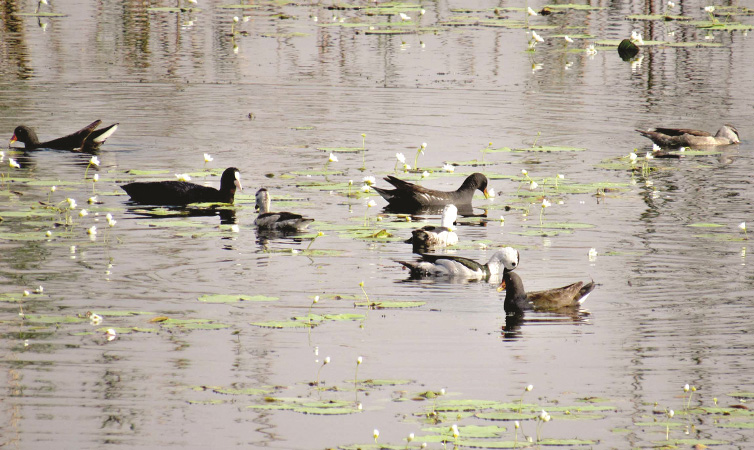Harihaans number increasing in Ghodaghodi Lake area

By Abinash Chaudhary
Dhangadi, Oct. 11: A 12-year-long study and monitoring the premises of Ghodaghodi Lake in Kailali district has found that the number of Cotton Pygmy geese (Harihaans) has been increasing in and around the lake area. As a matter of fact, Ghodaghodi has been listed in the World Wetland Area.
The Bird Conservation Association (BCN), an organization working in the field of bird conservation, conducted the study in partnership with Bird Conservation Network, on the number of Harihaans in Ghodaghodi area from 2009 to 2020, and its findings are published by noted ornithologists Hiru Lal Dagaura, Dayaram Chaudhary and Krishna Bhusal in 'Danphe', BCN's newsletter. The study of birds was carried out in both winter and summer seasons in the Lake area.
During winters from 2009 to 2020, the number of Harihaans was found to be 155, 188, 243, 290, 300, 289, 357, 329, 360, 374, 392 and 368 respectively, while in summer, it was 39, 180, 175, 252, 288, 175, 143, 153, 174, 164, 156 and 190.
Clearly, the number of birds was higher in winter than in summer.
It was also observed that the bird migrates to surrounding areas during the rainy season because of the availability of water in those places.
Researchers have cited the improved ecosystem in the Lake area as the reason for the increased number of avian species.
Daya Ram Chaudhary, chairman of the Bird Conservation Network, Kailali, who is also an ornithologist, said that the number of Harihaans had increased during both winter and summer.
In 1992, a total of 666 Harihaans were counted in the lake area.
Though the number dropped drastically since then, only since the last decade it started going up. Poaching, human intrusion during the breeding season, not to mention the loss of natural habitat, are the reasons behind the drop in the number of birds, Chaudhary said.
In addition, the study said widespread unwise use of chemical fertilizers in agriculture had a detrimental impact on the survival of the birds.
Neettapus coromandelianus, as Harihaans is scientifically known, reportedly hasn’t been sighted in places other than Ghodaghodi Lake area, so its preservation holds a special importance in view of biodiversity. Apart from the Harihaans, the lake area is also home to some of the world's endangered aquatic and terrestrial birds.
Recent News

Do not make expressions casting dout on election: EC
14 Apr, 2022
CM Bhatta says may New Year 2079 BS inspire positive thinking
14 Apr, 2022
Three new cases, 44 recoveries in 24 hours
14 Apr, 2022
689 climbers of 84 teams so far acquire permits for climbing various peaks this spring season
14 Apr, 2022
How the rising cost of living crisis is impacting Nepal
14 Apr, 2022
US military confirms an interstellar meteor collided with Earth
14 Apr, 2022
Valneva Covid vaccine approved for use in UK
14 Apr, 2022
Chair Prachanda highlights need of unity among Maoist, Communist forces
14 Apr, 2022
Ranbir Kapoor and Alia Bhatt: Bollywood toasts star couple on wedding
14 Apr, 2022
President Bhandari confers decorations (Photo Feature)
14 Apr, 2022










